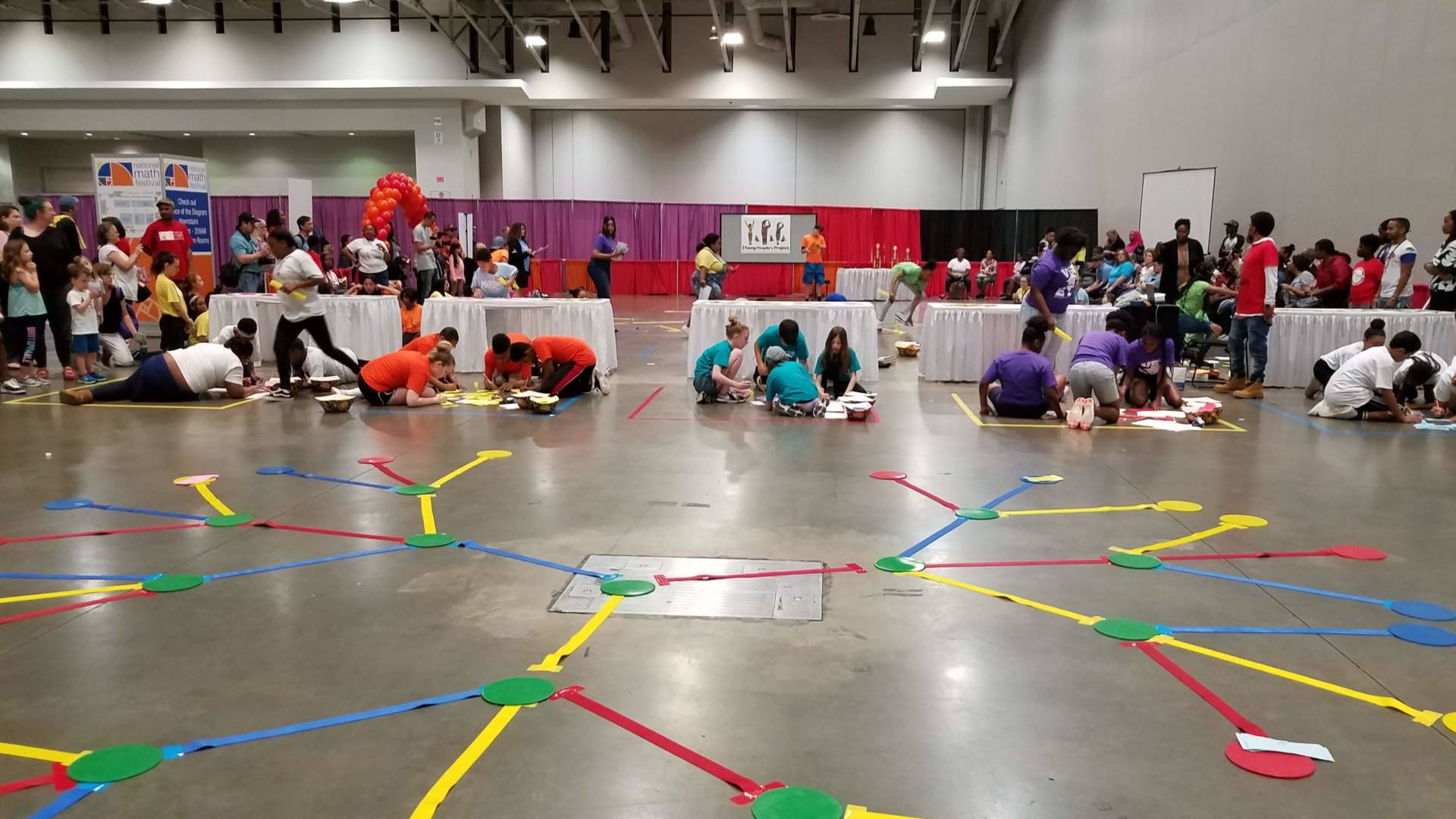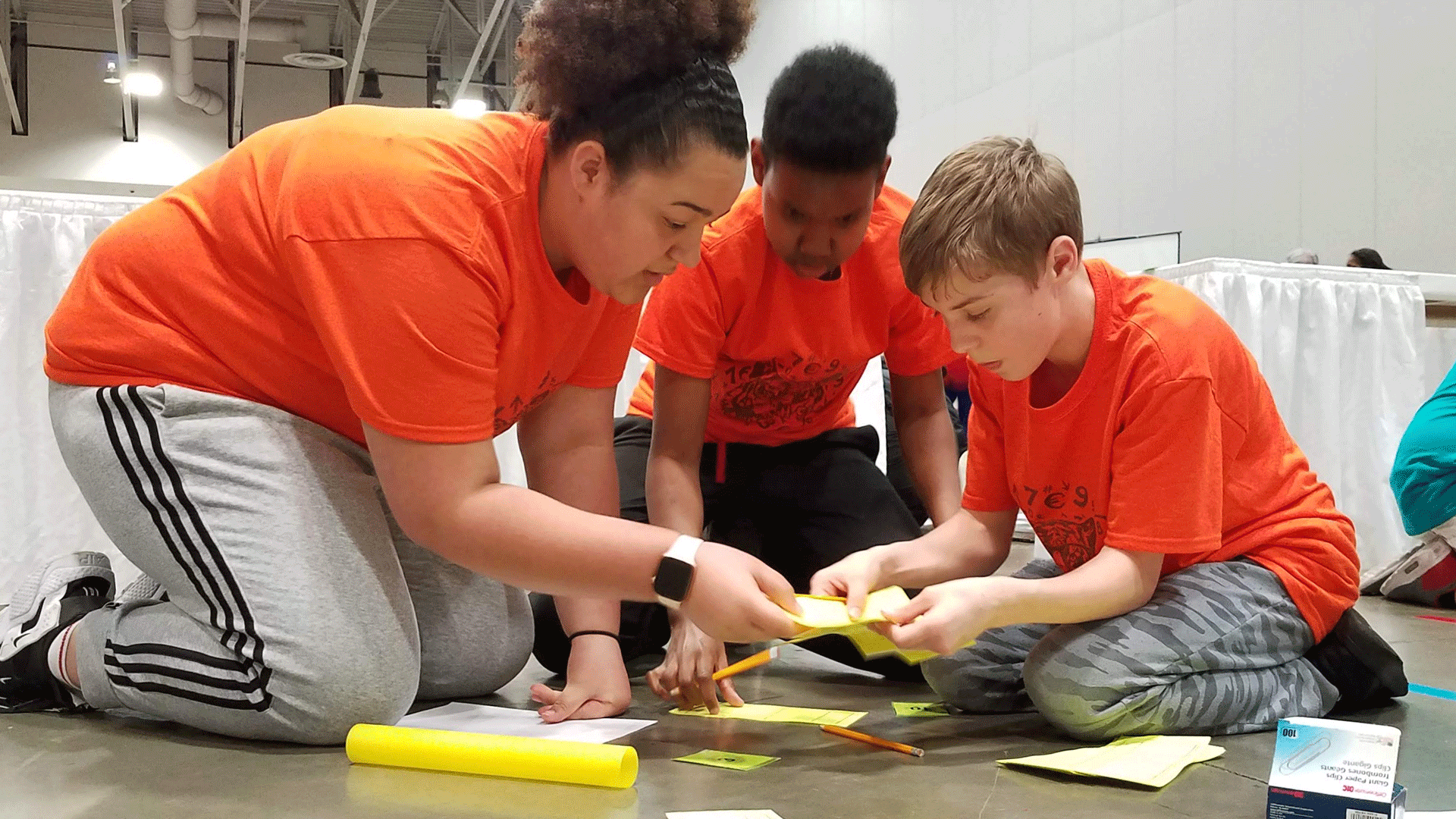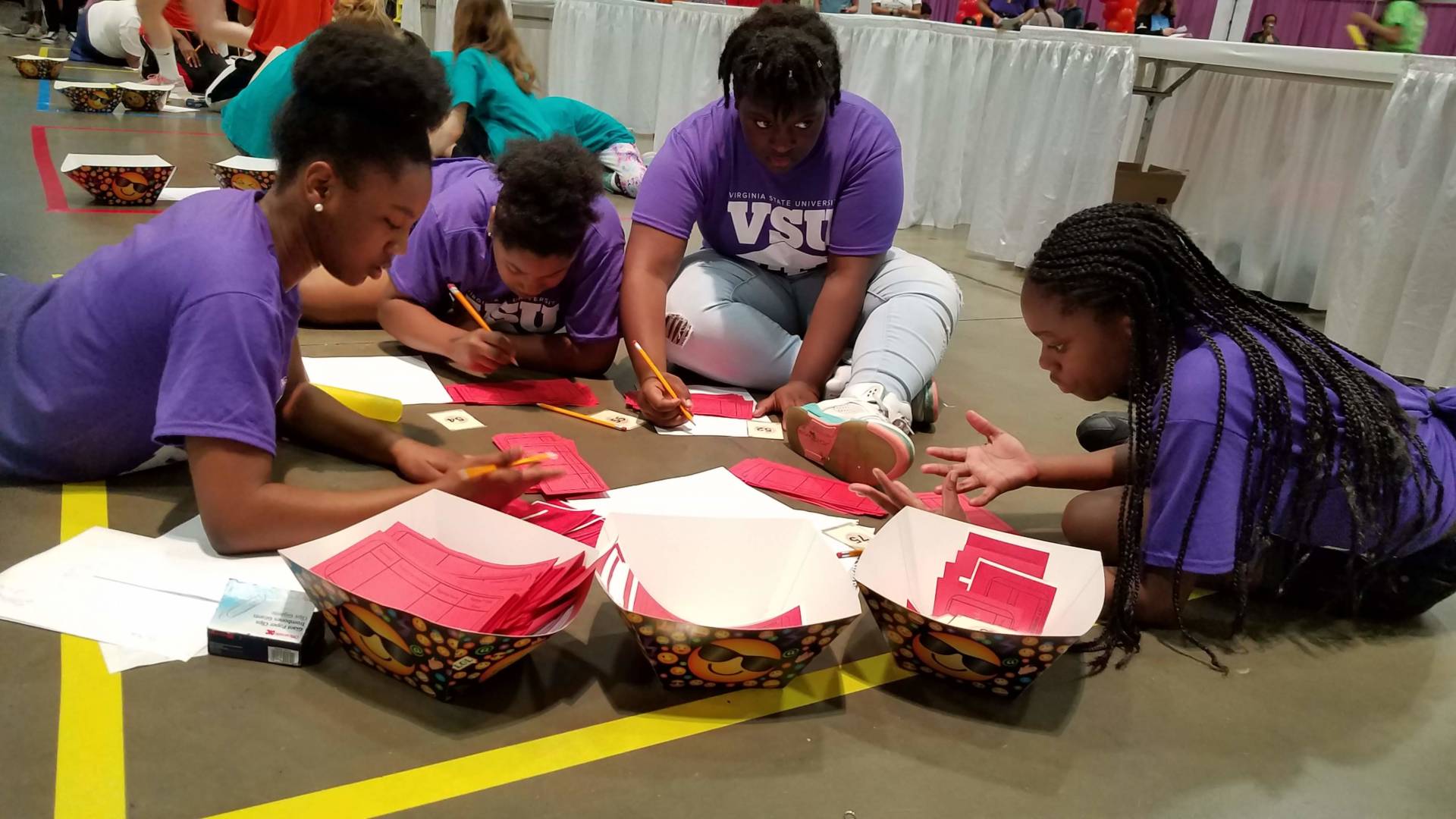Getting Physical: How the Flagway Game Sparks Learning and Love of Math
Author: Kara Newhouse
Go to Source
Seventh-grader Ellie Snyder always hated math. Nevertheless, when she heard about a game that combined math and athletics, she thought, “Why not? I’ll try it.” Her best friend, Olyvia Marshall, already loved math. Both girls signed up for the new Flagway team at Mansfield City Schools in Ohio.
“We were totally unprepared,” Ellie said of their first practice. “We wore jeans and hoodies.”
Flagway is a game that involves factoring numbers and categorizing them based on the Möbius function. Players use their solutions to navigate a color-coded course and place flags on the correct spot. Teams try to solve as many problems as possible in each round to score the most points.
Last month Ellie and Olyvia’s team competed in the National Flagway Tournament as part of the National Math Festival in Washington, D.C. This time the girls wore sneakers and gym clothes, making it easier to crouch on the floor to solve problems and then jump up to race through the course of radial paths.

Flagway was created by Bob Moses, a 1960s civil rights organizer who has devoted several decades to increasing math literacy among low-income students and students of color. Since the 1990s, children and teens have played Flagway in after-school programs started by Moses and his colleagues. In the past three years, however, The Young People’s Project (YPP) has encouraged the development of more formal teams and leagues across seven cities. According to the players, coaches and parents in those leagues, the game has improved students’ math literacy, engagement and teamwork.
Comprehension and engagement
“Seven! Six! Five!”
An announcer counted down the final seconds of the latest round of the National Flagway Tournament. Parents in Hall D of the Washington Convention Center hollered and cheered from the sidelines. At the center of a Flagway course, a girl with a messy bun checked the numbers on her paper, then stutter-stepped from red to blue to yellow paths and dropped the flag on a circle. Close behind her, a boy in gym shorts took single-stride hops along a yellow-yellow-blue path.
Both players dashed around the perimeter of the course and returned to their teams just as the timer buzzed. Officials collected the flags, and teams and spectators crowded together to await updated scores and rankings.

In Flagway, teams of four students categorize numbers based on whether they have an even number of distinct prime factors, an odd number of distinct prime factors or prime factors that repeat. Each category corresponds to a color, and those colors tell the running player which path to follow. Here’s what would happen, for example, if a team got the numbers 30, 4 and 10:
-30 has an odd number of prime factors (2x3x5). Odd matches red, so the player starts with a red path.
-The number 4 has repeating prime factors (2×2), so the player follows a yellow path next.
-Finally, the player follows a blue path, because 10 has an even number of prime factors (2×5).
Players take turns as the runner, and their teammates must write accurate factorization and express the problem in algebraic form on the flags.
“Not only do they have to have all the math correct, they have to get the running correct. It’s a lot of work,” said Courtney Vahle, a graduate student in math education and athletic director for a Flagway league in Alton, Illinois.
Vahle’s program brought two teams to the national tournament, and one of those teams won. Teams from Alton won in the previous two years, making them the undefeated champions for the tournament’s three-year history. That’s not because their teams are stacked with math prodigies, though.
“A lot of these kids were chosen because they expressed, on a survey we did, math anxiety,” said math professor Greg Budzban, who started the Alton league. The survey included questions like:
- If you can’t solve a math problem quickly, do you give up?
- Do you enjoy playing games where you can be active (tag, basketball, etc.)?
- Would you be interested in trying something other than a traditional math class?
“We’re looking for students that the physical engagement piece is something that attracted them,” said Budzban, who is dean of the College of Arts and Sciences at Southern Illinois University Edwardsville. All of the students who applied were accepted. He said that on pre-tests, almost none of the Alton students knew the math skills involved in Flagway, such as finding least common multiples or greatest common factors. On post-tests three months later, many students earned perfect scores.
In a 2009 case study in Chicago, the high school and college students who served as Flagway coaches also reported having increased flexibility with numbers as a result of the game. In Alton, a semester-long training for those coaches plays a role in the younger students’ success, according to Budzban. But he also attributes the positive effects of Flagway to the game itself.
“Translating the abstract mathematics into competition and movement helps (students) sort of embody the learning,” he said. “You’ve got more neural pathways that are involved.”
Indeed, researchers studying “embodied cognition” have found that when physical movement is incorporated into the learning process, it can have positive effects on math and reading comprehension. In the case of Flagway, those effects may come not only from physiology, but also the excitement of the competition.
“If I had a bunch of kids sitting after school, and I gave them worksheets of prime factoring integers for two hours, they would check out in the first five minutes,” said Budzban. “There would be literally zero engagement in that activity. But these kids have been doing this for months. That kind of ability to keep them engaged, to keep them motivated, and actually doing mathematics — there’s nothing quite like that.”

Teamwork
Parents at the national tournament echoed Budzban’s words about Flagway.
“It gets our kids (looking) forward to doing math problems,” said Jillian Hughes, whose daughter, Jenayah Rose, competed with a team from the Mandela Residents Cooperative Association Youth Center in Boston.
Hughes said that playing Flagway also reduced the amount of arguing that happens among kids at the youth center. According to Maisha Moses, executive director for the Young People’s Project, teamwork is a critical component of Flagway. While activities like math olympiads offer high-performing math students the chance to compete in teams, such opportunities are rare for students who struggle with math.
“The typical remediation model is you work one-on-one with a tutor, you’re off by yourself,” said Moses. “Through Flagway, you can come together and build community and build a team around doing math together.”
Christian Greene, one of Ellie Snyder’s teammates from Mansfield, put it this way when describing Flagway: “It’s a family thing.”
And how does Ellie feel about math just four months after joining the Flagway team?
“It’s my favorite subject,” she said.
